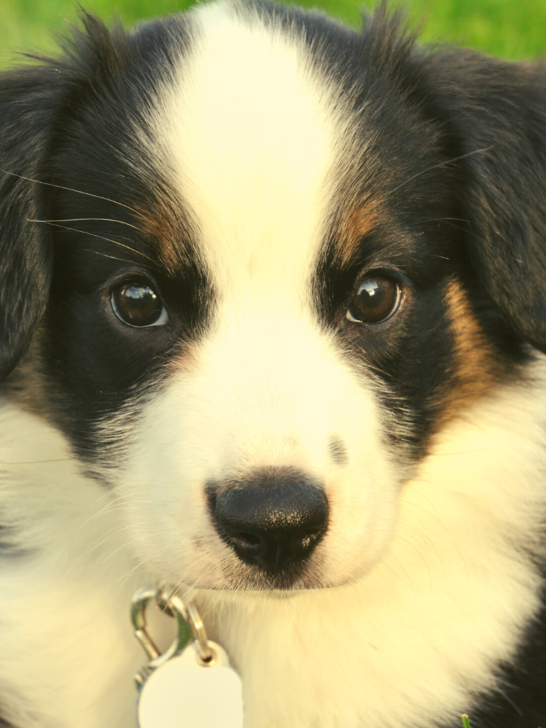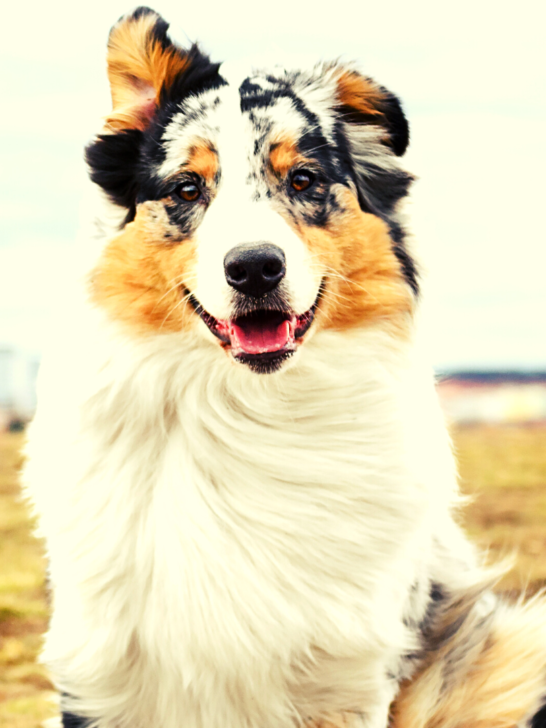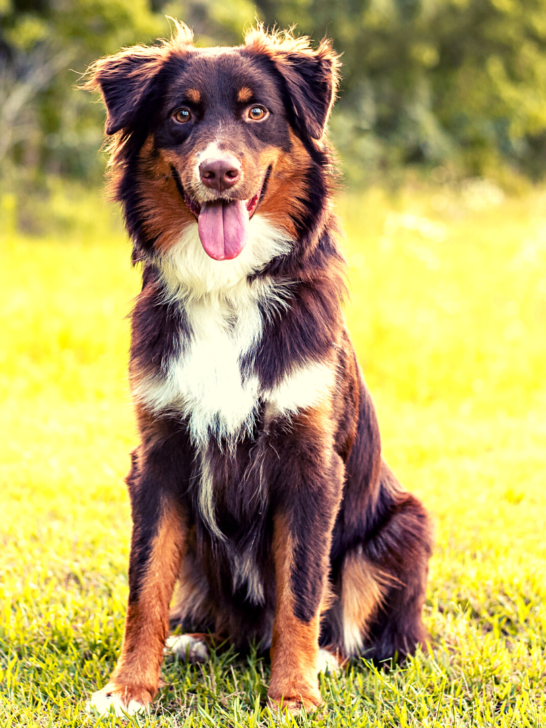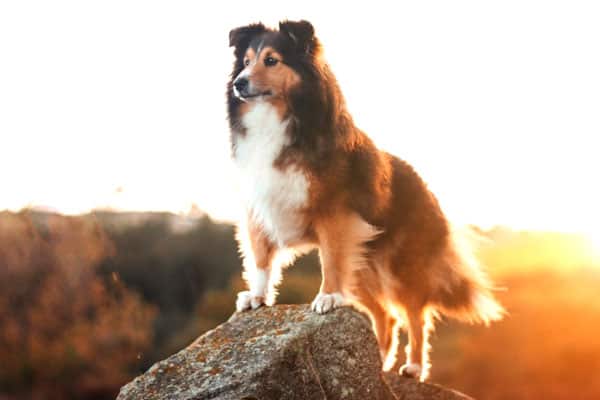Border Collie Australian Shepherd Mix: The Most Intelligent Herding Dog
Have you been thinking about getting a Border Collie Australian Shepherd mix?
If this is the case, then you are probably looking for more information about the breed, so you can find out if this would be the right breed of dog to bring into your home.
There is nothing more exciting than deciding to get a dog, but it is always really important to do your research on any dog breed that you are thinking of getting to ensure that it is the perfect match.
In this article, we are going to tell you everything that you need to know about the Border Collie Australian Shepherd mix, so you can make a well-informed decision.
We are going to look at the history of both breeds, how to care for this dog, and everything else that you need to know about them.
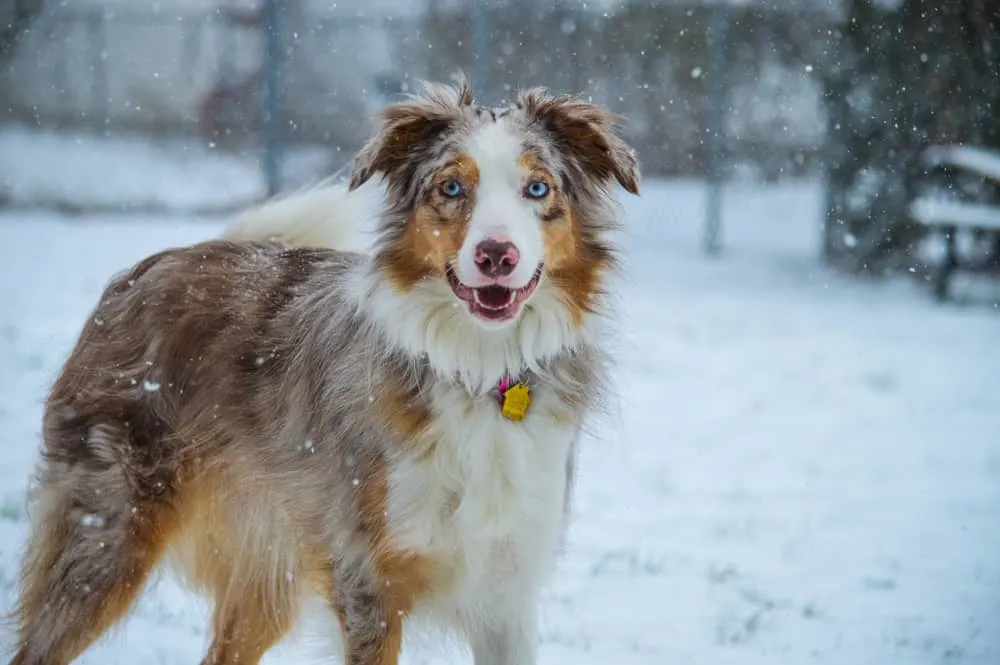
What is a Border Collie Australian Shepherd Mix?
The Border Collie Australian Shepherd Mix is a hybrid breed, where both parent breeds have historically been bred for herding livestock, like sheep and cattle, on farms and ranches.
Both of these breeds are classified in the herding group, which is why a mixture of both of these breeds is highly likely to inherit great focus and intelligence.
You can expect the Border Aussie to be loyal, obedient, and constantly on the go.
Even though they make a great companion animal, they can sometimes be found trying to herd their own families by running in circles around them and then dropping to the floor.
Displays of this type of behavior only emphasize their original breeding purpose and highlight their herding instincts.
In order to find out more about the Border Aussie breed, it is important to look at both of the parent breeds. We will provide a brief history of both of these parent breeds below.
Border Collie History
The Border Collie breed was found in the Anglo Scottish Border, and they were originally known as the Scotch Sheepdog. They are the result of mixing the Viking’s Spitz herders with the old Roman herders.
However, the ancestry of most Borders can be traced back to northern England around the 1890s. A dog that was called Old Hemp is relatively famous for being both an obedient and intelligent Sheepdog.
Many people noticed that the Old Hemp was a brilliant breed of dog, and they wanted to produce puppies that had their genes.
This dog fathered around 200 pups that all inherited his traits, which made a huge impact on the Border Collie’s breed popularity.
These dogs were then imported into the US around the 1920s. By the year of 1995, they were officially included in the American Kennel Club Herding Group.
Border Collies are in the medium size range, and they have a muscular but agile build. These dogs have an average height of between 18 and 22 inches, and they usually weigh between 30 and 45 pounds.
Females are usually slightly smaller and lighter.
More often than not, this breed will have a black and white coat with a medium length and feathering. The other type of hair that you might notice is shorter and coarser, with less feathering.
Some of the other colors that Border Collies can have are solid (except white), merle, bi-color, and tricolors.
You’d often find this breed with a black and white double coat that is medium-length with feathering. The other type of hair is shorter, coarser, and with lesser feathering.
Other colors that Border Collies may have are solid (except white), merle, bi-color, and tricolors. Their fur is known to be water-resistant, which is great for the type of work that they do.
You should also know that they are shedders.
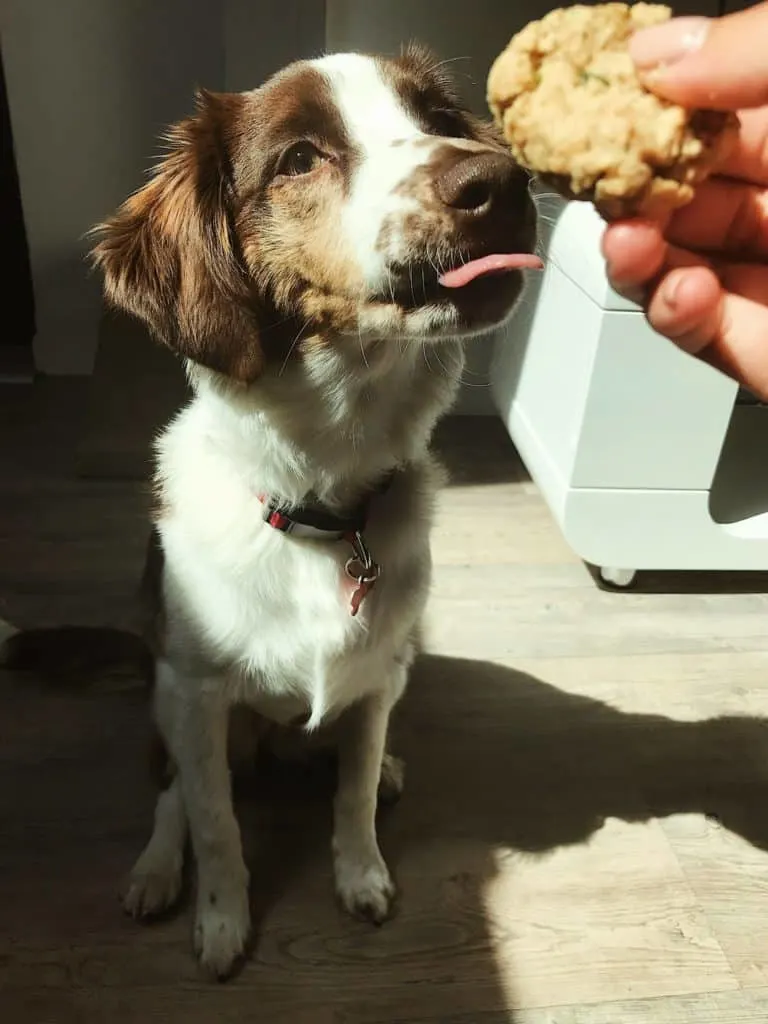
Australian Shepherd History
The Australian Shepherd is typically referred to as an Aussie, and this is a sheepdog that has previously been called a variety of other names, like New Mexican Shepherd, Spanish Shepherd, and Californian Shepherd.
Interestingly, this breed of dog actually has nothing to do with Australia. The Australian Shepherd’s ancestors originally came from somewhere between France and Spain.
The Basque Shepherd that they were working for traveled and lived in Australia, and then later moved to Western America in the late 19th century.
Aussies are naturally herding dogs, which is why they work well on a farm or ranch. They are rugged and agile canines that are keen to get to work.
They have an average height of between 18 and 23 inches, and they usually weigh around 40 to 65 pounds.
Aussies can have either a straight or wavy coat, and they can also have moderate to long feathering on their britches and forelegs.
When it comes to fur colors, they can be black, red, merle, and a mix of black, white, and tan. They are known to be shedders, and they shed heavily every spring to lose their winter coats.
This is a super-smart breed that has a strong drive to work, but they are definitely not well-suited for everyone.
Some Australian Shepherds will have an irresistible instinct to try and herd anything that moves, which can include people, dogs, cats, birds, and children. They can be stand-offish with people by nature.
Border Aussie Appearance
Border Aussies can look like either of their parent breeds, and it can inherit either of the genes, so it is difficult to say for sure what they will look like.
Both breeds have similar bodies and are well-balanced and agile, with a muscular and slim athletic body.
It is highly likely that your Border Aussie will look like both of their parents due to all of these similarities.
Border Aussies can have either almond or oval-shaped eyes, which will either be brown or green. Both parents also share the trait of having eyes that are two different colors, so this is also a possibility.
Border Aussie Height and Weight
Border Aussies will usually weigh between 35 and 60 pounds, and they will typically be around 18 to 23 inches tall. Females are known to generally be smaller and lighter than males.
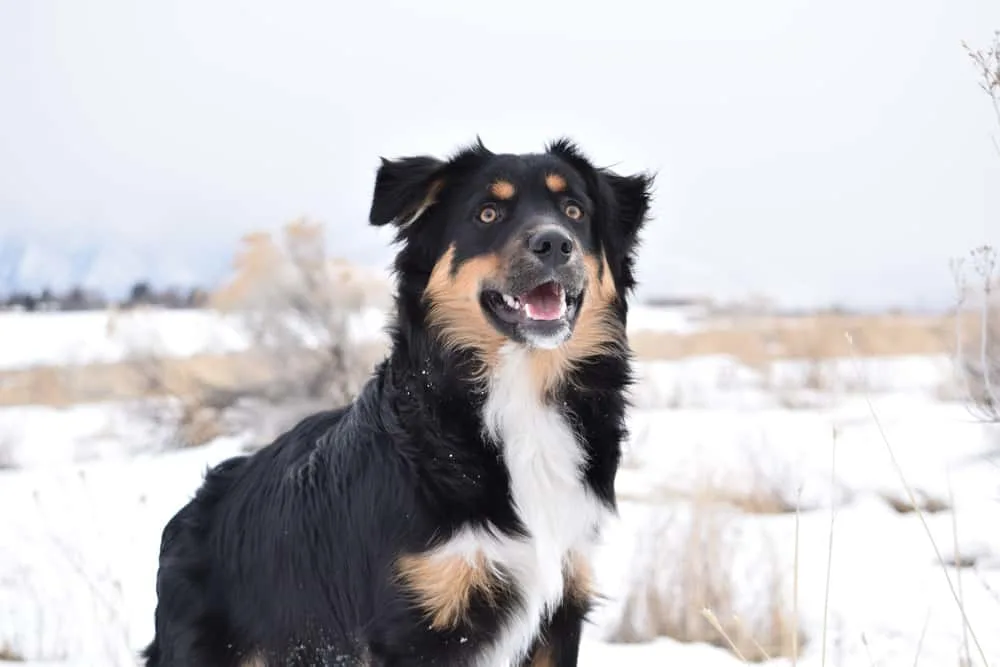
Border Aussie Coat and Colors
There are 17 official color options for Border Collies, including black, blue, blue merle, brindle, red, red merle, sable, white and black, white ticked, and much more.
They are also known to have various types of markings.
Australian Shepherds have 4 official colors, which are black, blue merle, red, and red merle. They can also have tan or white markings, or both.
So, Border Aussies can have any of these colors or a combination of colors.
Border Aussie Personality and Temperament
The majority of crossbreeds will have traits that are difficult to predict due to the fact that their purebred parents have traits that are very different from one another.
Border Aussies do not have this problem, as both of the parent breeds are closely similar when it comes to their traits and personalities.
They are known to be sweet, lively, obedient, and loyal, and they are typically family-oriented dogs.
They are a quiet breed with a calm temperament, and they are not usually very noisy unless they are reacting to something that has gotten them excited.
These dogs are known for making great companions, but they will sometimes try to herd members of their family, due to their strong instincts.
If this happens, they will run in circles around you and then drop down to the floor. These herding instincts can be both good and bad.
Border Aussies are suitable for homes with children as they can both work to tire each other out, and Border Aussies are known to be both playful and friendly.
You should also know that dogs that are specifically raised to work might not want to interact with people
Border Aussie Training
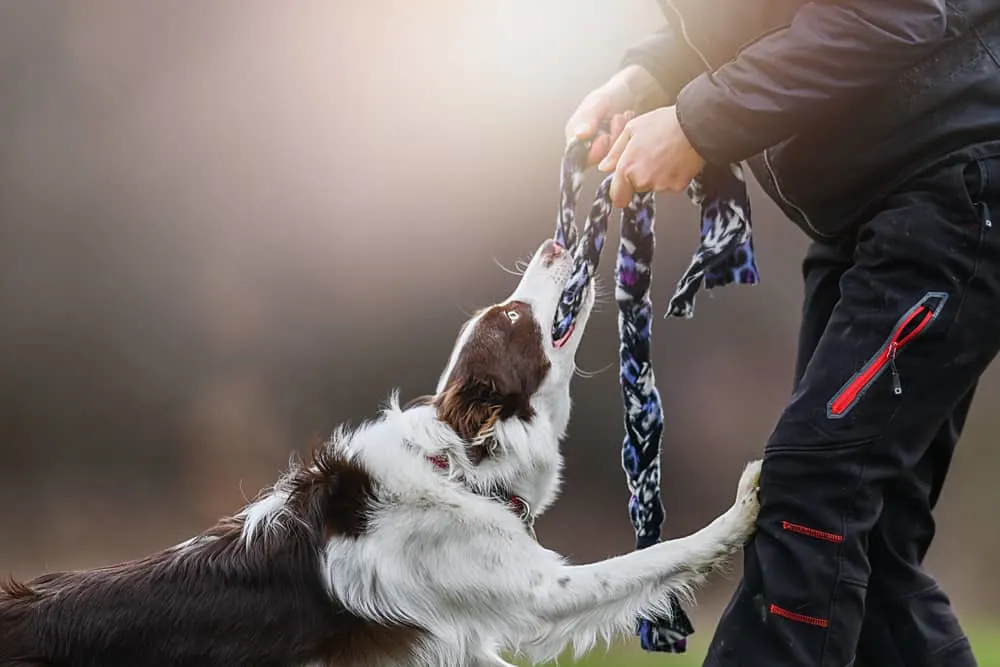
Border Aussie dogs are known for being highly curious by nature, and this is the main reason why training and socialization are so important for them.
They will need to be exposed to as many new things as possible when they are growing up, and you will also need to go through obedience training with them.
The best opportunities for them to be trained are those that occur with a professional handler, but you can also choose to do this yourself with the right level of knowledge.
Both of the parent breeds are intelligent dogs, which means that Border Aussies are usually really easy to train. As well as this, they are often eager to please, which makes them more motivated during training.
You don’t usually have to repeat steps over and over, as these dogs are very quick learners, and they can learn efficiently from hand signals and voice commands.
However, you should know that they do need to be kept mentally stimulated, or they could get bored quite easily. You can try to make up new challenges, tricks, and puzzles to keep their brains working.
You can also play a variety of games with them to keep them occupied and exercised.
Border Aussies are also known for being both responsive and sensitive, and you should never yell at them, as they can easily get hurt or offended.
Instead, you should try to be gentle, while also being firm and laying down the rules. You will need to have boundaries with your dog in order to enforce the correct behavior.
Are Border Aussies Good Family Dogs?
Border Aussies will typically thrive in a family with older children. They love to try and herd small animals and children, which could lead to them chasing and nipping at children’s ankles.
They are not trying to be aggressive at all, but this is what their natural instincts tell them to do. They can be trained out of this habit, but they might not be best suited to homes with small children.
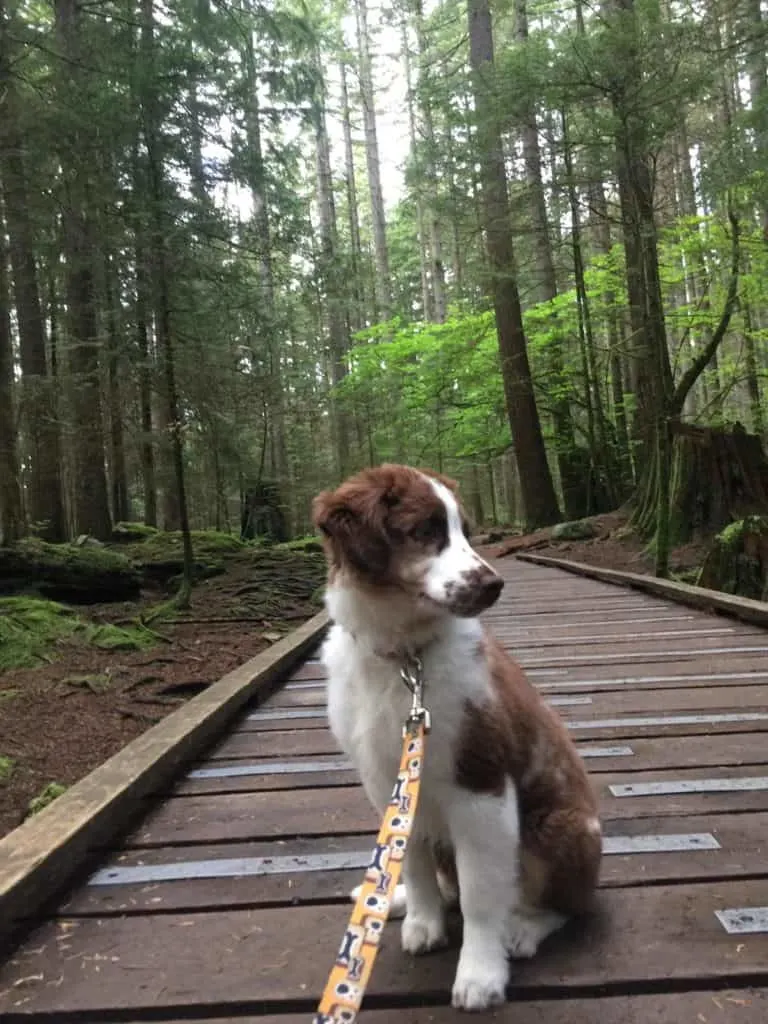
Border Aussie Grooming, Coat, and Care
Their hair is likely to be smooth and medium in length, which means that it is going to require moderate maintenance.
They have dense and weather-proof double coats, and while these are quite durable, they will need a thorough brush at least once a week.
This will help to keep the coat’s oils well distributed and help to prevent any matting of the fur.
You should use a slicker brush to target the loose hairs of their undercoats, and they might also need to have a full groom every couple of months to ensure that their undercoat is free from excess loose hair and that they are able to keep cool in the summer.
They don’t typically need to have their nails cut unless they have gotten to the stage where they are long and uncomfortable.
The frequency of their teeth brushing will ultimately depend on the diet of the dog and the condition of their teeth.
If their teeth are not in the best condition, and they have a build up of tartar, then you will need to brush their teeth every day.
However, if your dog is fed a dry kibble diet, and you give them regular dental chews, then you don’t need to brush their teeth every day.
Border Aussie Health
There are a few common diseases when it comes to Border Collies and Australian Shepherds, and it is important to be aware of them.
Australian Shepherds are prone to things like thyroid disease, cancers such as hemangiosarcoma and lymphoma, cataracts, elbow dysplasia, and epilepsy.
Border Collies are usually considered to be healthy in general, but they are prone to hip dysplasia and epilepsy, and deafness.
As well as all of this, both of these parent breeds are susceptible to Collie Eye Anomaly, which is an eye disease that is usually attributed to similar breeds.
Both of the parents should have been properly tested according to breed standards before breeding. This will lower the risk of your dog developing any of these conditions.
Both Border Collies and Australian Shepherds can carry the merle gene, which has been linked to hearing and vision problems.
Dogs that come from two merle parents can be blind, deaf, or even born with no eyes.
















